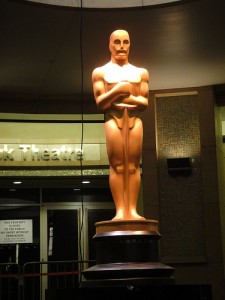 |
| Photo: pop culture geek |
The “best” picture of 2012 was Argo.
At least that’s the film that won the Oscar for best picture. According to the Oscars, the decision to give this award to
Argo was made by the nearly 6,000 voting members of the Academy of Motion Picture Arts and Sciences. As
Oscars.org notes, “the Academy numbers among its members the most gifted and skilled artists and craftsmen in the motion picture world.”
In other words, this choice is made by the “experts.”
There is, though, another group that we could have listened to on Sunday night. That group would be the people who actually spend money to go to the movies. According to that group,
Marvel’s the Avengers was the “best” picture in 2012. With domestic revenues
in excess of $600 million, this filmed earned nearly $200 million more than any other picture. And when we look at world-wide revenues,
this film brought in more than $1.5 billion.
- Life of Pi ($583 million)
- Les Miserables ($395 million)
- Django Unchained ($380 million)
- Lincoln ($245 million)
- Argo ($207 million)
- Silver Linings Playbook ($160 million)
- Zero Dark Thirty ($104 million)
- Amour ($18 million)
- Beast of the Southern Wild ($12 million)
After Life of Pi, the combined revenue of the remaining eight films – a list that includes the “best” picture Argo – is still not quite what Marvel’s the Avengers earned.
Despite what seems like a clear endorsement by the customers of this industry, the Avengers was ignored by the Oscars. Perhaps this is just because I am an economist, but this strikes me as odd.
Movies are not a product made just for the members the academy. These ventures are primarily made for the general public. And yet, when it comes time to decide which picture is “best,” the opinion of the general public seems to be ignored. Essentially the Oscars are an industry statement to their customers that says: “We don’t think our customers are smart enough to tell us which of our products are good. So we created a ceremony to correct our customers.”
The Oscars are hardly alone in the entertainment industry. We see something similar in the sports industry. The fans are not generally asked to choose the “best” player in each sport. Instead, experts (i.e. sports writers) often tell us who is the “Most Valuable Player,” who is an “All-Star,” or who is worthy of the Hall of Fame.
However, what if we asked the customers?
Consider the NBA (a league I often write about). The fans vote for the starters to the NBA All-Star game. And if we are to believe the fans, the “best” player in the NBA – or the player who received the most votes –
was Kobe Bryant. Kobe is also currently
the NBA’s highest paid player. So it looks like Kobe is the “best.”
Before we jump to this conclusion, we need to revisit the argument about “best” picture. This argument focused on the revenue the films generated. And although Kobe is clearly popular with fans and with the Lakers, it is not clear from this that he generates the most revenue.
A published study I conducted with Martin Schmidt and Stacey Brook indicated that the primary driver of gate revenue in the NBA is wins (not a player’s “star power” and not scoring totals). Given this research, if we want to identify the player who produces the most revenue we need to first look at wins.
- Kevin Durant (Oklahoma City): 14.2 Wins Produced
- LeBron James (Miami): 13.2 Wins Produced
- Tyson Chandler (New York): 11.4 Wins Produced
- Chris Paul (LA Clippers): 10.9 Wins Produced
- James Harden (Houston): 9.8 Wins Produced
Keep reading on freakonomics >>


![NEOCASTRISMO [Hacer click en la imagen]](http://4.bp.blogspot.com/_5jy0SZhMlaU/SsuPVOlq2NI/AAAAAAAAH1E/4xt2Bwd2reE/S150/ppo+saturno+jugando+con+sus+hijos.jpg)






No hay comentarios:
Publicar un comentario